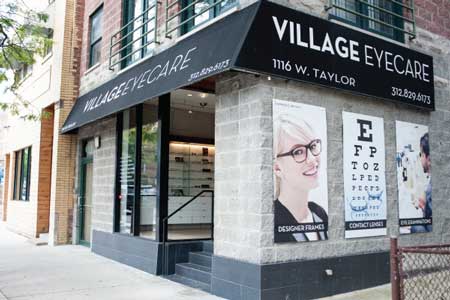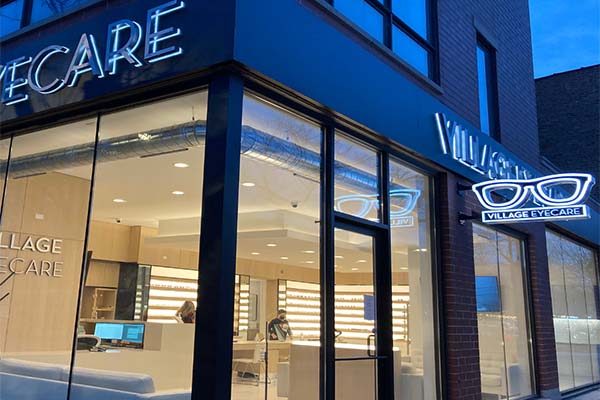Understanding the Different Vision Adjustment Procedures Available for Clearer View
In the realm of vision adjustment procedures, a wide range of options exist to deal with refractive errors and supply individuals with clearer sight. From the widely recognized LASIK surgical treatment to much less intrusive procedures like PRK and implantable lenses, the area of ophthalmology supplies a series of strategies tailored to fit different requirements and choices. Each treatment includes its very own set of factors to consider, benefits, and possible risks. Recognizing the nuances of these vision improvement techniques is crucial for making educated decisions regarding one's aesthetic health and wellness. Allow's discover the ins and outs of these procedures and shed light on the path to achieving boosted vision clearness.
LASIK Surgery
LASIK surgery is a typical refractive treatment used to correct vision troubles such as nearsightedness, astigmatism, and farsightedness. This surgical strategy, which represents Laser-Assisted sitting Keratomileusis, aims to improve the cornea to enhance just how light is concentrated on the retina, ultimately improving vision clearness. Throughout the procedure, a slim flap is developed on the cornea, and a laser is used to get rid of accurate amounts of tissue to reshape it suitably. This improving permits light to be precisely focused onto the retina, remedying refractive errors.
One of the primary benefits of LASIK surgical procedure is the quick improvement in vision experienced by people. Overall, LASIK surgical treatment is a popular option for individuals seeking a long-term option for their vision problems.
PRK Treatment

PRK is an appropriate choice for individuals with slim corneas or those at a higher danger of eye injuries, as it does not involve producing a corneal flap. The recuperation procedure for PRK is a little longer contrasted to LASIK, as the epithelium needs time to regrow. Patients may experience discomfort and blurry vision for a few days adhering to the procedure.
Regardless of the longer healing time, PRK can yield superb cause vision improvement, making it a useful choice for those who may not appropriate prospects for LASIK surgery. - Eye Doctors in Andalusia
Implantable Lenses
In comparison to PRK where the cornea is improved straight, implantable lenses offer another method for correcting vision by placing synthetic lenses inside the eye. This procedure is specifically valuable for individuals with high degrees of astigmatism, farsightedness, or nearsightedness who may not appropriate candidates for laser surgical treatments like LASIK or PRK.
Implantable lenses, likewise referred to as phakic intraocular lenses, job by supplementing the eye's all-natural lens with an artificial one. These lenses can be placed before the all-natural lens (anterior chamber) or behind the iris and in front of the all-natural lens (posterior chamber) By readjusting the power and positioning of these lenses, ophthalmologists can effectively fix refractive errors and improve aesthetic skill.
One advantage of implantable lenses is that they are removable and exchangeable, giving versatility for future modifications. Nevertheless, as with any kind of surgical treatment, there are threats included, such as infection or cataract development. Clients considering implantable lenses need to talk to an eye treatment expert to determine one of the most appropriate choice based on their private requirements and eye health and wellness.
Corneal Rings

The treatment for putting corneal rings is minimally invasive and fairly fast, frequently performed as an outpatient procedure. During the surgery, the ophthalmologist makes a small cut in the cornea and inserts the rings at a certain depth. Once in position, the rings assist to reshape the cornea, giving a smoother surface area for light to get in the eye, which can result in clearer vision.
Corneal rings are taken into consideration a relatively easy to fix treatment, as they can be eliminated or changed if essential. While they may not totally eliminate the need for glasses or call lenses, corneal rings can dramatically improve vision high quality and total visual convenience for people with keratoconus or other corneal irregularities.
Refractive Lens Exchange
Complying with the improvement of corneal irregularities with procedures like corneal rings, an additional vision improvement technique that can resolve refractive errors is Refractive Lens Exchange (RLE) RLE is an operation that involves replacing the eye's natural lens with a synthetic intraocular lens (IOL) to remedy refractive errors such as presbyopia, nearsightedness, and farsightedness. This treatment is specifically beneficial for individuals that might not be appropriate candidates for procedures like LASIK or PRK due to elements such as slim corneas or high refractive mistakes.
Recuperation time for RLE is fairly fast, and individuals can expect enhanced vision quickly after the treatment. As with any kind of surgical procedure, potential threats and difficulties exist, so a complete examination with an eye treatment professional is important find more information to determine if RLE is the best vision correction option.
Conclusion

In the realm of vision improvement treatments, a wide range of options exist to attend to refractive errors and offer individuals with more clear view.LASIK surgical procedure is an usual refractive treatment made use of to remedy vision issues such as farsightedness, astigmatism, and nearsightedness.While likewise a typical refractive procedure, the PRK (Photorefractive Keratectomy) technique varies from LASIK surgery in its method to fixing vision issues.Adhering to the adjustment of corneal abnormalities with treatments like corneal rings, an additional vision modification method that can address refractive mistakes is Refractive Lens Exchange (RLE) LASIK surgical procedure, PRK procedure, implantable lenses, corneal rings, and refractive lens exchange are all choices that linked here can attend to various vision issues.